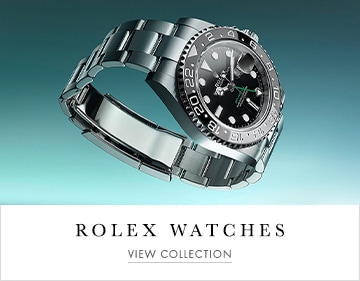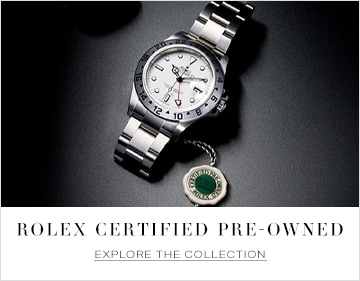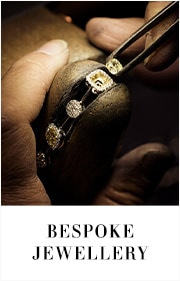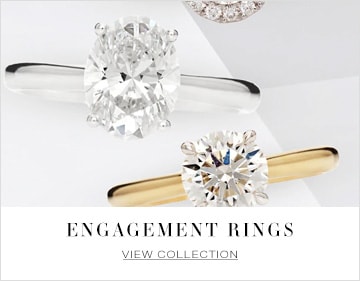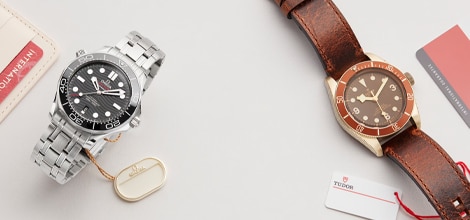-
Watches
By Category
Anytime. Anywhere.
By Collection
By Brand
-
Rolex
By Category
By Collection
Featured
- Rolex Certified Pre-Owned
-
Pre-Owned & Vintage
By Category
-
Brands
Watch Brands
Jewelry Brands
-
Jewelry
By Metal
By Gemstone
By Collection
By Edit
By Brand
-
Engagement
By MetalBy StyleBy Cut/ShapeBuild Your Ring
-
Wedding
By MetalWedding JewelryEditorial
- Sale
-
Sell Your Watch
Sell Your Watch
We will expertly assess your watch and offer you
a competitive and accurate valuation for the
watch you wish to sell to us.Free valuation by our experts
Unrivalled knowledge & expertise
Competitive prices offeredBrands we buy
A. Lange & SohneAudemars PiguetBlancpainBreguetBreitlingCartierIWC SchaffhausenJaeger-LeCoultreLonginesOMEGAPatek PhilippeRolexHeuerTudorVacheron Constantin - Stores
-
Calibre - Watch News & Stories
Categories
- Shop by Category
-
Watches
- Back
- Shop All Watches
- By Category
- Anytime. Anywhere.
- By Collection
-
By Brand
- Rolex
- Angelus
- Arnold & Son
- Berd Vay'e
- Blancpain
- Bovet
- Breitling
- BVLGARI
- Carl F. Bucherer
- Cartier
- CHANEL
- DOXA
- Girard-Perregaux
- Grand Seiko
- Hamilton
- Hublot
- ID Genève
- IWC Schaffhausen
- Jacob & Co
- L’epee 1839
- Longines
- Luminox
- Nivada Grenchen
- NOMOS Glashutte
- OMEGA
- Oris
- Panerai
- QLOCKTWO
- Rado
- Raymond Weil
- Reservoir
- Speake Marin
- TAG Heuer
- Tissot
- Tudor
- Ulysse Nardin
- William Wood Watches
- WOLF
- Zenith
- Rolex
- Rolex Certified Pre-Owned
- Certified Pre-Owned
-
Brands
- Back
- View All Brands
-
A-Z
- Rolex
- Angelus
- Arnold & Son
- Berd Vay'e
- Bijoux Birks
- Blancpain
- Bovet
- Breitling
- BVLGARI
- Carlex
- Carl F. Bucherer
- Cartier
- CHANEL
- Di Modolo
- Dinh Van
- DOXA
- FOPE
- Girard-Perregaux
- Goshwara
- Grand Seiko
- Gucci
- Hamilton
- Hublot
- ID Genève
- Ippolita
- IWC Schaffhausen
- Jacob & Co
- J Fine
- L’epee 1839
- Longines
- Luminox
- Mappin & Webb
- Marco Bicego
- Massena LAB
- Mayors
- Messika
- Mikimoto
- Nivada Grenchen
- NOMOS Glashutte
- OMEGA
- Oris
- Panerai
- Paul Morelli
- Pasquale Bruni
- Penny Preville
- Persée
- QLOCKTWO
- Rado
- Raymond Weil
- Reservoir
- Roberto Coin
- Royal Asscher
- Serafino Consoli
- Speake Marin
- TAG Heuer
- Tissot
- Tudor
- Ulysse Nardin
- Uneek
- William Wood Watches
- WOLF
- Zenith
- Jewelry
- Engagement
- Wedding
- Sale
- Sell Your Watch
- Stores
- Calibre - Watch News & Stories
- My Account
- Wishlist
- Store Finder
- Request an Appointment
- Help & Support
Ask The Expert: Mark Toulson, Head of Watch Buying
By Amanda Evans | 7 minute read

The world of haute horology is a fascinating place full of aesthetically inspiring timepieces that embrace their heritage whilst harnessing developments in technology. Our luxury brands all have unique identities that attract different audiences – whether it be due to their robust history, creativity, or mechanical engineering. There truly is a timepiece to suit everyone, in fact sometimes it can be hard to know where to start when choosing a timepiece. Whether you’re just entering the market or you’re a seasoned, watch connoisseur, the mechanics, materials and purpose for which timepieces are designed are forever changing with the latest trends and technology.
In the first of a series of Buyers Q&A’s, we approached our Head of Watch Buying, Mark Toulson and invited him to share his wealth of expertise in ‘Understanding Watches’. With over 15 years in the watch buying business, Mark is the perfect goldmine of information to present some clarity to watch movements, materials, purpose and much more.
Let’s Understand Watches with Mark…
So then Mark, let’s start with movements – quartz, automatic or manual? For someone new to watches, what are the key differences between each of these movements?
Christmas Day 1969 saw Seiko announce the Astron – the world’s first quartz watch. It was a memorable day that changed the watch industry forever and provided the first real challenge to mechanical watches since their inception in the 1500’s. A battery provides an electrical current to the watch circuits of which the quartz crystal is a part. The crystal vibrates 32,768 times a second and the circuits turn this into a regular electronic pulse that powers a small motor that ultimately turns those pulses into the movement of the hands. The main virtues of a quartz watch are that there are few moving parts meaning there is less to go wrong but also they are highly accurate and depending on the quality relatively inexpensive to manufacture.
Mechanical watches fall into two main types, manual and automatic. Manual movements require the user to periodically wind up the mainspring and from that the gears and the escapement control the release of power into the movement of the hands. Automatic movements are the same in terms of how they use the power stored in the mainspring but rather than winding up the mechanism simply wearing the watch every day and moving ones arm provides enough kinetic energy to power the movement.
The visible difference between quartz and the mechanical types of movement are with quartz the seconds hand has a definite “step” as it moves around the dial, whereas on mechanical watches the hand has a graceful sweep to it that marks the time. Quartz are highly accurate and require minimal maintenance other than periodic battery replacements. They have so much going for them that people often wonder why mechanical watches are so popular. Well, I believe it’s because they are much more involving for the wearer.
That either manual or automatics require some form of human action to power them provides almost an intimate relationship, a symbiosis that you don’t get with quartz. Over the years mechanical watches have become increasingly durable, accurate, less susceptible to shocks and magnetism but for me they’ve never lost their ability to fascinate particularly if the movement is visible through the case back. Arguably a quartz watch is science, whilst a mechanical one is art!
Watches are crafted from a broad range of materials these days, to include leather, rubber, metal and ceramic. What are the pros and cons of each?
To a large extent, the type of band that secures the watch to your wrist is indicative of the type of watch it is. For example, a leather or alligator strap tends to be on more dressier, classical watches whereas rubber tends to be used on action-orientated sports watches. The different types have their pros and cons. Rubber straps are comfortable, tough and resistant to saltwater whereas a beautiful leather strap is intended for a more refined existence in the office or at dinner.
Metal bracelets come in many forms including steel, a combination of steel and precious metal and completely precious metal, whilst polishing or satinising the material gives the manufacturer the opportunity to create contrasting finishes to great effect. Depending on the metal it can transform a watch into almost a piece of jewellery but certainly gives the watch a completely different feel to a leather strap. Steel bracelet watches are incredibly popular, particularly for “sports” type watches. They look good, are durable and provide a secure way of attaching the watch to your wrist.
Mixed metal, or steel and precious adds a touch more glamour whilst a full 18ct gold bracelet for example is a real statement piece. Ceramic bracelets are also popular. As a material it is lighter than steel, very scratch resistant and also hypoallergenic, meaning it won’t irritate your skin if you have sensitivities. Equally, it can be coloured so allows different eye-catching finishes to be achieved. Overall then, each type of material has its place depending on the use you plan for your watch. It’s a matter of choice based on your lifestyle.

There seems to be a watch to suit nearly every purpose. Sports, fashion, classic or jewellery – What’s the current trend? Are there any brands particularly renowned for timepieces within each of these categories?
Sports watches are a big favourite right now with around 70% of the watches we sell having one or a combination of qualities that make them sporty. 100 metres water resistance, rotating bezel, chronograph function etc are common attributes on this type of watch. Famous brands in this market include Breitling, TAG Heuer, Rolex and IWC. Interestingly there’s also a move towards retro-inspired Sports watches. We’ve seen this with reintroductions from brands such as Seiko with their Prospex divers watches that recreate styles from the late 1960s and early ’70s. Along similar lines are Doxa, with their signature orange dial and tonneau or barrel-shaped case.
Classic watches tend to be understated, mostly have round cases and are presented on a leather or alligator strap. They are most likely to be worn on formal, dressier occasions. Depending on one’s lifestyle this type of watch may be the right choice for you but their appeal tends not to be as great as Sports. Good examples of watches of this type come from Jaeger-LeCoultre in the form of the Reverso or Master collection, Patek Philippe with their Calatrava or Piaget with the Altiplano. Jewellery watches take the dressed-up look to a whole new level.
Brands such as Rolex, Piaget and Vacheron Constantin exquisitely set some of their collections with diamonds and other precious and semi-precious stones to create pieces of jewellery that just happen to tell the time. Some of these creations are breath-taking but aren’t really everyday wear. Finally, fashion watches or at least those with a fashionable name such as Boss, Vivienne Westwood or Michael Kors have their place. They tend to be fun and inexpensive but this price segment has been impacted by the arrival of “smartwatches”.

It’s an obvious thing to say but people have more than one pair of shoes so multiple watch ownership shouldn’t be seen as an extravagance. A watch for sports, for everyday wear or for big occasions is unlikely to be the same one, after all you wouldn’t wear trainers to a wedding!
Pre-owned vs new – what would you say are the highlights of each?
I think that Pre Owned splits into two parts. Regular pre-owned and vintage. Pre-owned can be something simple such as a 5-year-old Omega or Rolex. These can be attractive for all sorts of reasons such as a client’s specific interest in a watch that’s no longer produced or simply based upon price. Vintage is a whole different world. I’d consider anything that’s around 30 years or older vintage and these tend to be of interest to watch collectors who are looking for a specific model or movement that interests them or adds to their overall collection in some specific way.
For example, some collectors follow certain brands or specific types of watches such as chronographs. In many cases, the watches are never worn but collected simply for the pleasure of ownership. It’s a very different experience to buying a new watch. Clearly, anything new is exciting and should be exactly what you want…..and depending on the type of watch it is it could be eminently collectable in a decade or two. That’s a serious point. Today many watches are seen as investment pieces so it is worth considering that aspect of new watch ownership when you make your purchase.
And the million-dollar question Mark – If you could choose only 1 watch to suit your lifestyle, what would it be?
It’s an almost impossible question to answer! I’m lucky enough to see so many beautiful watches that it’s a challenge to limit myself to just one choice. If I had to though then the chances are it would be a vintage piece and most likely to be an A-series 5402 Audemars Piguet Royal Oak. Above all others, this watch defines so much of what is successful in watches today, but launching in 1972 it must have caused a sensation. Arguably the first luxury steel sports watch, integrated case and bracelet and at 39mm it was considered “jumbo-sized” this watch established a design and style of watch that is still imitated today. I’m not sure that it exactly suits my lifestyle but it’s an icon and a piece of history that I’d be so proud to own.


